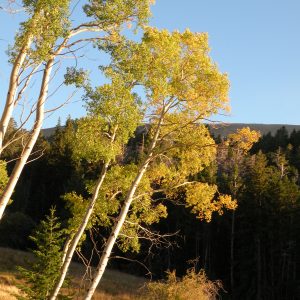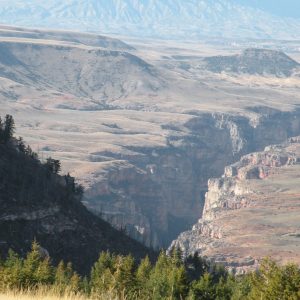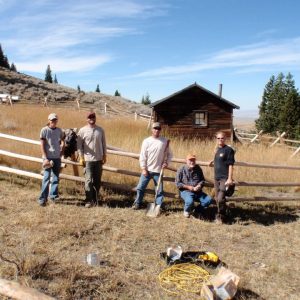As everyone else is wrapping up their internships, mine is just beginning. I’m working with the Bureau of Land Management in Portland, happy to be employed, and excited about the potential for new experiences. First on the list: WINTER! I’m a Floridian so I’m used to the wet. The cold AND wet is a challenge that I welcome with open arms (and waterproof gloves, a jacket, and rain pants).

Douglas firs and other conifers - Near Elk Lake, Oregon
Yesterday was my first day in the wilds of Oregon. We were checking up on some contractors who have been sampling for the fungus Bridgeoporus nobilissimus within Willamette National Forest. Tagging along behind a BLM botanist, I was finally able to get someone to answer my unrelenting stream of questions (thanks, Kelli!) and was properly introduced to the numerous conifers of the Pacific northwest. The forests were rather drippy as expected, but with the moisture comes thick blankets of mosses and lichens.

Hypogymnia, Platismatia, and other fungi

Cladonia spp. - Near Dunlap Lake, Oregon
One site we visited was located next to a small lake and partially overlapped a rock talus. The talus has prevented conifers from taking over the area and has allowed deciduous species to proliferate instead. We were there just in time to see the vine maples (Acer circinatum) with their fall foliage in full effect.

Vine Maple (Acer circinatum)
The talus also provided a home for so many newts (Taricha granulosa)! I’m told that they’re extremely common -too common to warrant a photograph- but I’ve yet to find evidence of that. As an amateur photographer, I’ve always hated birds for two reasons. First, they’re usually perched high in the trees behind leaves/branches/obstruction of some sort, and second, they always fly away before I’m able to focus on them. Newts are the exact opposite… easily accessed, slow moving, and their bright orange bellies are ridiculously adorable to boot!

Rough-Skinned Newt - Near Dunlap Lake, Oregon
It’s unlikely that I’ll be offered very many opportunities to go out in the field during my time in this internship but I’m enjoying the everyday life here in Portland as well. I find it kind of hilarious that I have a job in which I commute to downtown everyday to work in an office building from 8-5:00 five days a week. It’s so normal and stress-free compared to my former schedule as a graduate student. The people that I am working with have been wonderful so far and incredibly welcoming and I look forward to the coming months. We’ll see how I feel about winter come December/January!
Lara Drizd, Forest Service Regional Office & BLM State Office, Portland, OR








